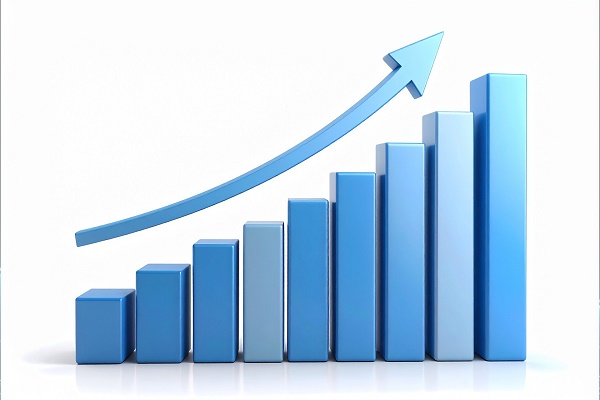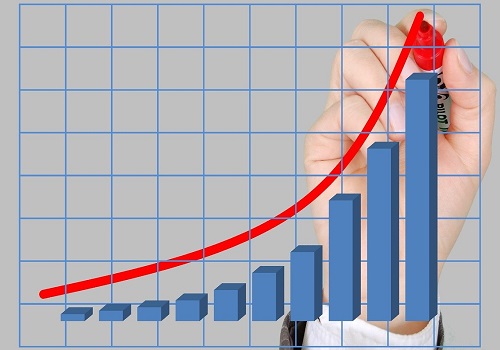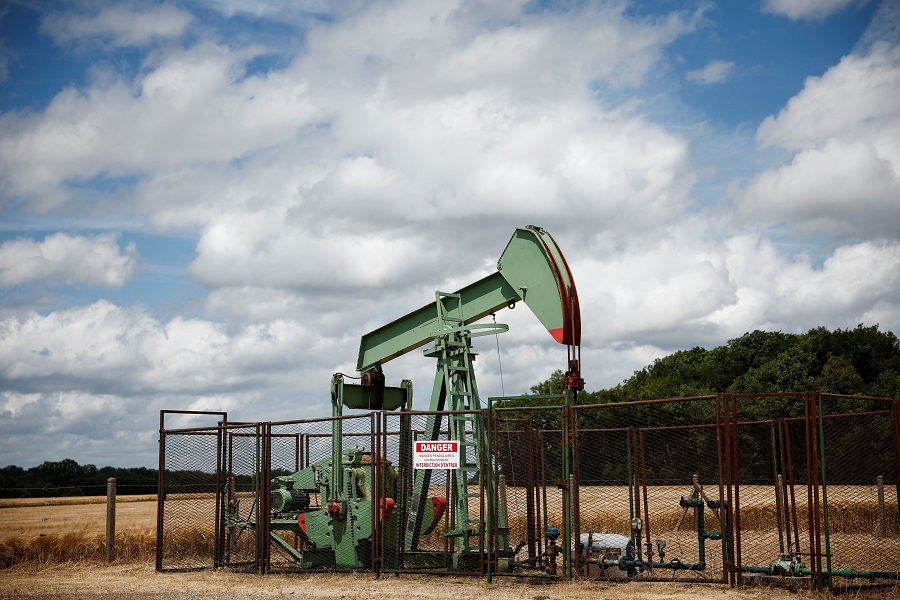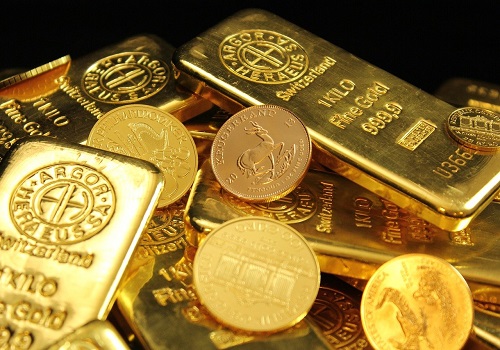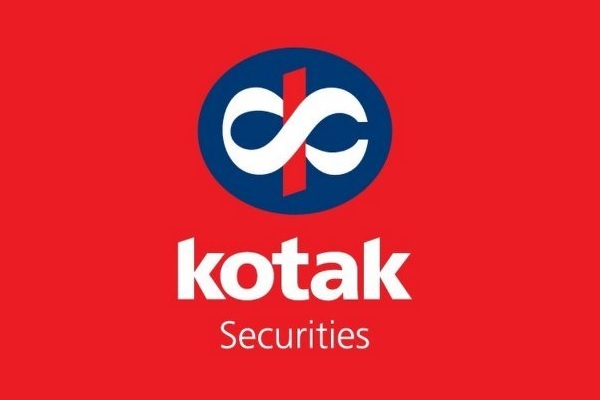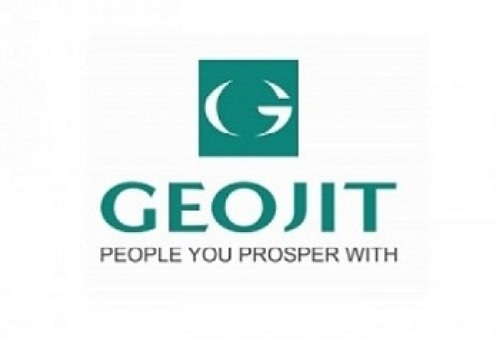Gold trading range for the day is 60465-61615 - Kedia Advisory

Gold
Gold prices experienced a 0.33% increase, closing at 61,156 per ounce due to heightened tensions in the Middle East, which bolstered the demand for this safe-haven asset. However, concerns regarding interest rates caused gold to surrender most of its gains throughout the session, ultimately closing only slightly higher. The core PCE prices aligned with expectations, while personal spending surpassed estimates, supporting the view of sustained low-interest rates, which diminished gold's appeal. Meanwhile, the ECB left its key rate unchanged in Europe. The ongoing uncertainty in the Middle East played a pivotal role in supporting gold prices, as Israeli forces launched their most significant ground offensive in the Gaza conflict despite diplomatic efforts. In India, physical gold purchases increased during a major festival, albeit at a slower rate compared to the previous year, mainly due to near-record high domestic prices. In China, premiums over global spot prices decreased, with dealers offering discounts over official domestic prices. China's net gold imports via Hong Kong fell by nearly 11% in September compared to August, reflecting changing consumer demand. From a technical perspective, the market saw fresh buying interest, as open interest increased by 0.28% to 14,781 contracts. Gold's price rose by 204 rupees. Key support levels are at 60,810, with potential testing of 60,465, while resistance is expected at 61,385, and a breakout could drive prices toward 61,615.
Trading Ideas:
* Gold trading range for the day is 60465-61615.
* Gold prices climbed with rising Middle East tensions pushing up the demand
* The core PCE prices rose in line with forecasts, while personal spending beat estimates, hurting the demand for a bullion.
* Purchases of physical gold during a major festival in India improved, albeit at a slower pace compared to last year
Silver
Silver experienced a slight increase in value, rising by 0.19% to reach 71717, largely due to persistent safe-haven demand amid escalating tensions in the Middle East. This uptick was further supported by positive economic indicators, including higher-than-anticipated U.S. consumer spending in September, robust third-quarter GDP, and stronger durable goods orders for September. These factors reinforced the possibility of the Federal Reserve maintaining elevated interest rates. Meanwhile, the European Central Bank chose to keep key rates unchanged following a streak of weak PMIs. Investor attention remains focused on the Middle East situation, as any escalation could potentially prompt a flight to safety and consequently benefit the bullion market. Federal Reserve Chair Jerome Powell's remarks highlighted concerns about persistently high inflation, suggesting the need for potential additional monetary policy tightening. Although recent data has shown some improvement in shorter-term measures of core inflation, Powell cautioned that sustained progress is necessary to ensure a substantial decrease in inflation toward the desired goal. From a technical standpoint, the market witnessed a decrease in open interest by -3.6%, settling at 19082 while prices saw an increase of 137 rupees. Silver's support level stands at 71370, with a potential test of 71020 if it falls below, while resistance is anticipated at 71985. A breakthrough above this level could push prices to test 72250.
Trading Ideas:
* Silver trading range for the day is 71020-72250.
* Silver gains supported by continued safe-haven demand fuelled by Middle East tensions
* US consumer spending beats expectations in September
* Additional stimulus measures in China bolstered the outlook for metal's industrial use
Crude Oil
Yesterday, crude oil prices rose by 2.63% to settle at 7128 per barrel due to escalating geopolitical tensions. A U.S. military attack on facilities in Syria associated with Iran raised concerns about a widening Israel-Hamas conflict. The attack was in response to recent rocket and drone assaults against American soldiers in Iraq and Syria. Additionally, the easing of U.S. energy sanctions on Venezuela could divert about 250,000 barrels per day of Venezuelan crude to the U.S. Gulf Coast. Goldman Sachs analysts maintained their first-quarter 2024 Brent crude price forecast at $95 per barrel. They also mentioned that lower Iranian exports might cause baseline prices to rise by 5%. In a less likely scenario of trade interruption through the Strait of Hormuz, where 17% of global oil production transits, prices could surge by 20%. However, U.S. crude oil stockpiles increased last week as refinery utilization dropped. Crude inventories rose by 1.4 million barrels to 421.1 million barrels, much higher than expected. Refinery crude runs and utilization rates both declined. From a technical perspective, the market witnessed short covering with a decrease in open interest by -25.8% to 4013. Crude oil is currently finding support at 6988 and resistance at 7210. A move above the resistance could push prices to test 7293.
Trading Ideas:
* Crudeoil trading range for the day is 6849-7293.
* Crude oil gains as a U.S. military attack on facilities in Syria linked to Iran
* Goldman Sachs analysts said they retained their first-quarter 2024 Brent crude price forecast at $95 a barrel
* Venezuela could divert 250,000 bpd of crude to US after sanction relief
Natural gas
Natural gas prices rose by 1.34% to settle at 295.4 yesterday due to increased demand and lower inventories. This surge was driven by colder temperatures in the Pacific Northwest, emphasizing the seasonal volatility in the natural gas market. However, data from the EIA revealed that US utilities added 74 billion cubic feet of gas into storage, which was above the five-year average but below market expectations of 80 billion cubic feet. LSEG, a financial firm, reported that average gas output in the Lower 48 U.S. states had increased to 103.9 billion cubic feet per day in October, up from 102.6 bcfd in September. Meteorologists predicted a shift from warmer than normal weather to colder conditions from Oct. 29 to Nov. 2, followed by near-normal temperatures from Nov. 3 to 11. LSEG anticipated that US gas demand, including exports, would rise to 108.2 bcfd next week due to increased heating demand before decreasing to 107.3 bcfd in two weeks with milder but still seasonally cool weather. In addition, pipeline exports to Mexico decreased to 6.9 bcfd in October from a monthly record high of 7.2 bcfd in September. From a technical perspective, the market saw fresh buying with a 16.2% increase in open interest, settling at 13,594. Prices also rose by 3.9 rupees. Key support levels for natural gas are at 291 and 286.5, while resistance is likely at 302, with a potential test of 308.5.
Trading Ideas:
* Naturalgas trading range for the day is 286.5-308.5.
* Natural gas rose amid forecasts of higher demand and lower inventories.
* Temperatures in the Pacific Northwest of US fell below average for several days highlighting the seasonal volatility.
* Data from the EIA showed that US utilities added 74 billion cubic feet of gas into storage on the week until October 20th
Copper
Copper prices showed a 0.92% increase, settling at 706.8 yesterday. This uptick was driven by positive signs of economic recovery in China, a major metals consumer. China's industrial profits rose for the second consecutive month in September, indicating a stabilizing economy due to supportive government policies. In addition to this, copper inventories in Shanghai Futures Exchange warehouses saw a significant 37.5% decrease. China's efforts to bolster its economy boosted demand prospects for metals. On a global scale, the refined copper market revealed a 33,000 metric ton deficit in August, slightly higher than the 30,000 metric ton deficit in July. For the first eight months of the year, there was a 99,000 metric ton surplus, a significant shift from the 313,000 metric ton deficit in the same period the previous year. Worldwide copper output in August reached 2.25 million metric tons, while consumption was 2.28 million metric tons. China, in particular, demonstrated a 2.3% month-on-month increase in copper cathode output in September, marking an 11.3% year-on-year growth. From a technical perspective, the market saw short covering with a drop in open interest by -15.34% to settle at 7238, while prices increased by 6.45 rupees. Copper is currently finding support at 702.2, and a drop below may test 697.4 levels. On the upside, resistance is expected around 710.1, and a breakthrough could lead to prices testing 713.2.
Trading Ideas:
* Copper trading range for the day is 697.4-713.2.
* Copper gains on some upbeat signs of recovery in consumer China
* Profits at China’s industrial firms extended gains for a second month in September, adding to signs of a stabilising economy
* Shanghai warehouse copper stocks down 37.5%
Zinc
Zinc exhibited a rise by 0.68%, settling at 221.65 due to revitalized stimulus actions by the Chinese government. These measures, including an increased budget deficit ratio and the injection of sovereign debt into the economy, specifically targeting manufacturing and steel-driven infrastructure, assuaged concerns about reduced resource demand in China. However, this positive momentum in the zinc market was juxtaposed with strains in the residential construction sector. Country Garden's official default on a dollar bond last week induced added stress. Meanwhile, in the US, the third-quarter GDP surged by 4.9% year-on-year, marking the fastest growth in two years. In terms of market dynamics, the global zinc market experienced a notable surplus expansion. The International Lead and Zinc Study Group (ILZSG) data revealed a substantial increase in the surplus, expanding to 22,000 metric tons in August from a meager 2,900 tons the previous month. Furthermore, the surplus for the first eight months of the year soared to 489,000 tons, a significant surge from 156,000 tons during the same period the previous year. From a technical standpoint, the market is currently witnessing short-covering behavior. Despite a decrease in open interest by -5.46% to settle at 3604, zinc prices escalated by 1.5 rupees. The support level is identified at 220.6, with a potential dip to 219.4, while resistance is anticipated at 222.6. A breakthrough above this level could drive prices to test 223.4.
Trading Ideas:
* Zinc trading range for the day is 219.4-223.4.
* Zinc gains amid renewed stimulus measures from the Chinese government easing concerns
* The U.S. GDP surged by 4.9% year-on-year in the third quarter, with the economy growing at the fastest rate in the past two years.
* Beijing stated it would widen its budget for the year to borrow an extra CNY 1 trillion and focus on manufacturing investments
Aluminium
The rise in aluminium prices, up by 0.78% to settle at 205.45, can be attributed to several factors. Firstly, a robust demand in China and diminishing inventories in London Metal Exchange (LME) approved warehouses have provided a strong push. LME aluminium stocks have fallen by almost 20% since early June. The significant proportion of canceled warrants, representing metal earmarked for delivery, indicates a likelihood of more aluminium leaving the LME system. Concerns about availability on the LME have narrowed the cash discount over the three-month aluminium contracts to around $16 a ton, a considerable reduction from levels above $50 a ton in August. Hydro, a Norwegian aluminium manufacturer, has no immediate plans to reduce primary metals production further, focusing instead on curtailing production in recycling units. In China, aluminium ingot inventory has seen a slight decline but remains 2,000 mt higher than the same period last year. Changes in domestic goods in transit may impact future arrivals, with steady or slightly reduced inventories in China's major consumer regions. From a technical perspective, the market has witnessed short covering as open interest dropped by -9.5% to settle at 3,228. Prices have increased by 1.6 rupees. Aluminium is currently finding support at 204.1, and if it falls below this level, it could test 202.6. On the upside, resistance is expected at 206.3, and a break above this level may lead to price testing 207.
Trading Ideas:
* Aluminium trading range for the day is 202.6-207.
* Aluminium climbed as firm demand in China and lower inventories in LME approved warehouses.
* Stocks of aluminium in LME warehouses at 480,250 tons have dropped nearly 20% since early June
* China's aluminum ingot inventory was at 623,000 mt, down 7,000 mt from October 23 and 3,000 mt from October 19.
Cottoncandy
Cottoncandy experienced a modest increase of 0.34% yesterday, closing at 59,020. This gain was influenced by the USDA's October WASDE report, which lowered the U.S. cotton production forecast for the 2023/24 season to 12.8 million bales due to reduced yields in Texas. Notably, Brazil is expected to surpass the U.S. in cotton production for the first time, with projections hinting at Brazil potentially outpacing U.S. cotton exports, marking a significant shift. Australia's cotton exports to China surged in August to 61,319 metric tons, valued at $130 million, reflecting improved trade relations. In contrast, the Cotton Association of India raised its crop production estimate for the 2022-23 season to 31.8 million bales. This differs from the government's third advance estimate of 34.3 million bales. Looking ahead, India is gearing up for a robust 2023-24 cotton season, with an expected production of 33 to 34 million bales, supported by significant sowing across 12.7 million hectares. In the technical landscape, the cotton market witnessed increased open interest, rising by 0.93% to 108. Prices climbed by 200 rupees, with key support at 58,980 and resistance at 59,080. This suggests potential further price gains.
Trading Ideas:
* Cottoncandy trading range for the day is 58940-59140.
* Cotton gained as USDA cut U.S. production in 2023/24 to 12.8 million bales
* The USDA also said Brazil's cotton production in 2023/24 will exceed that of the United States for the first time
* Australia's exports of cotton to China ballooned to 61,319 metric tons worth $130 million in August
* In , a major spot market, the price ended at Rupees dropped by percent.
Turmeric
The recent price movement in the turmeric market was influenced by a 3.33% increase, settling at 13528, primarily due to concerns about potential yield losses resulting from unfavorable October weather conditions. However, the market's upside appears constrained by improved crop conditions, brought about by more favorable weather. Reports indicate that crop conditions are satisfactory and are expected to be ready for harvest between January and March. A significant factor contributing to this increase is the expectation of a 20-25% decline in turmeric seeding in areas such as Maharashtra, Tamil Nadu, Andhra Pradesh, and Telangana, as farmers shift their priorities. During April to August 2023, turmeric exports rose by 11.51%, reaching 82,939.35 tonnes compared to the 74,377.12 tonnes exported during the same period in 2022. In terms of recent export performance, August 2023 saw a drop of 18.20% with 11,322.58 tonnes of turmeric exported, compared to 13,841.47 tonnes in July 2023. Additionally, there was a 6.67% decline in turmeric exports in August 2023 when compared to August 2022 when 12,131.39 tonnes were exported. From a technical standpoint, the market is currently experiencing short covering, with open interest dropping by -0.48% to settle at 13430. Despite this, prices have increased by 436 rupees. Turmeric is finding support at 13052, and a breach below this level could lead to a test of 12576. On the other hand, resistance is anticipated at 13902, and a move above this level may drive prices to test 14276.
Trading Ideas:
* Turmeric trading range for the day is 12576-14276.
* Turmeric gained due to the potential for yield losses caused by the crop's anticipated unfavourable October weather.
* However, upside seen limited amid improved crop condition due to favorable weather condition.
* Expectations for a 20–25 percent decline in turmeric seeding this year
* In , a major spot market, the price ended at Rupees dropped by percent.
Jeera
Jeera prices showed a 0.99% increase, closing at 47,380 due to stockists' renewed interest amid recent price declines, prompting short covering. The market is closely watching the upcoming jeera sowing season, expected to be normal due to favorable weather conditions and adequate soil moisture. However, global demand for Indian jeera has dwindled as buyers opt for alternative sources like Syria and Turkey due to India's comparatively higher prices. Export activity is likely to remain subdued in the coming months. Furthermore, there's uncertainty in the market, with the possibility of China purchasing Indian cumin in October-November before the arrival of new cumin. FISS forecasts indicate that cumin demand may surpass supply this year, with jeera exports decreasing by 23.76% from April to August 2023 compared to the same period in 2022. In August 2023, jeera exports dropped by 2.61% compared to July 2023 and by a significant 66.98% compared to August 2022. The India Meteorological Department defines normal rainfall as ranging between 96% and 104% of the 50-year average. From a technical standpoint, the market witnessed short covering as open interest decreased by -0.15% to 4,107, while prices rose by 465 rupees. Support for jeera is currently at 45,840, with a potential downside target of 44,300. Resistance is anticipated at 48,600, with a potential breakout leading to prices testing 49,820.
Trading Ideas:
* Jeera trading range for the day is 44300-49820.
* Jeera gained as stockists are showing interest in buying on recent downfall triggering short covering.
* Prices will track the upcoming sowing of jeera that is expected to remain normal due to favorable weather condition.
* Adequate soil moisture, and favorable weather condition for crop will boost the overall sowing activities.
* In , a major spot market, the price ended at Rupees dropped by percent.
Views express by all participants are for information & academic purpose only. Kindly read disclaimer before referring below views. Click Here For Disclaimer



